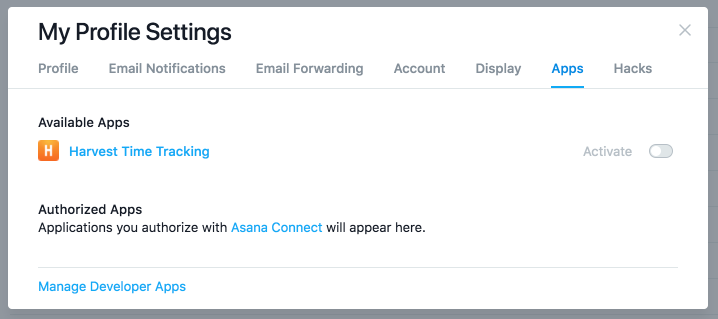

- Harvest app integrations generator#
- Harvest app integrations android#
- Harvest app integrations software#
It also has the option to create recurring invoices, put someone on retainer, and send invoices directly from the app. You can set the tax values that would automatically calculate the tax applicable on every invoice.

Harvest clearly has a lead over Clockify as it has a comprehensive invoicing system built in that allows you to link your work with the bills and you can create invoices with a click. However, Harvest lacks a dedicated dashboard that comes in handy when you just want a quick peek at the productivity levels in a week. You can filter the graph and generate reports based on time, billability, client, project, and teams.īoth Harvest and Clockify create in-depth reports and offer multiple ways to filter them based on different parameters. Harvest also lets you generate that report in a custom time frame that can be anywhere in between a week to the beginning.Ĭlockify offers a dedicated dashboard that gives you a visual representation of the work you’ve accomplished in a time frame.
Harvest app integrations generator#
You get an in-depth report generator for time spent on tasks and can filter those reports based on client, project, and team. Harvest lacks a dedicated dashboard to get an overview of your work at a glance but makes up with additional features. For example, you can change the client, add or remove tags, and make the task billable.īoth Harvest and Clockify check the boxes of time tracking, but Harvest has an additional approval tab which makes it a great option for remote teams.

Also, Clockify lets you edit the parameters of the project at any given point. However, Clockify lets you create new projects on the fly which is not possible in Harvest. Harvest also has an option to send your timesheets for approval which makes it handy for management to track your time.Ĭlockify is similar to Harvest where you just enter the project name and start working on it. You can also put in the time manually which works just as well, in case you forgot to run it when starting work. You select an existing project and start working on it with the timer counting hours and minutes. Talking about the primary feature, time-tracking on Harvest is pretty straightforward. Clockify beats Harvest in platforms supported. If that isn’t enough, you can get the Clockify browser extension for Chrome and Firefox and expand the reach of the software. However, Clockify offers apps for Linux as well including all the devices supported by Harvest.
Harvest app integrations android#
Harvest is available on Windows, Mac, iPhone, and Android devices and if your workflow never goes beyond these devices, you won’t have a problem. In terms of the user interface, it’s a tie.
Harvest app integrations software#
Yet, you can still track your time spent on every project from one place and switch between different projects easily.Īpart from different design schemes, both Harvest and Clockify offer intuitive ways to use the software and the interface is well polished. Be it time-tracking, report generation, team and project management, or invoice creation, the software is categorized for each function.Ĭlockify, on the other hand, is extremely simple to get started with as the software has fewer functions. Harvest has a feature-rich interface designed to give you control over every aspect of your work. I’d try to explore every feature and explain what should use which time tracker at the end. On the surface, the two time tracking software look similar which causes a lot of confusion. They offer insightful data that can be used to calculate different parameters such as productivity, efficiency, compensation, etc. Both Harvest and Clockify are designed to track time spent on projects.


 0 kommentar(er)
0 kommentar(er)
